Poblano peppers and cubanelle peppers are both mildly spicy peppers, but they each have unique twists.
Poblano peppers are spicier and have an earthier flavor than sweet cubanelle peppers. Both peppers are high in vitamin C. They’re roughly the same size, although cubanelles are more rectangular. Poblanos have an earthy flavor, whereas cubanelles are sweet. Poblanos have a SHU of 1,000-2,000 while cubanelles come in slightly lower at 500-1,000.
Keep reading to learn all about both kinds of peppers, including their similarities, differences, and if they can be used interchangeably in recipes.
Comparison – Differences between poblano peppers and cubanelle peppers
To start, let’s go through the exact differences between poblanos and cubanelles. Later on, we’ll focus on each pepper individually.
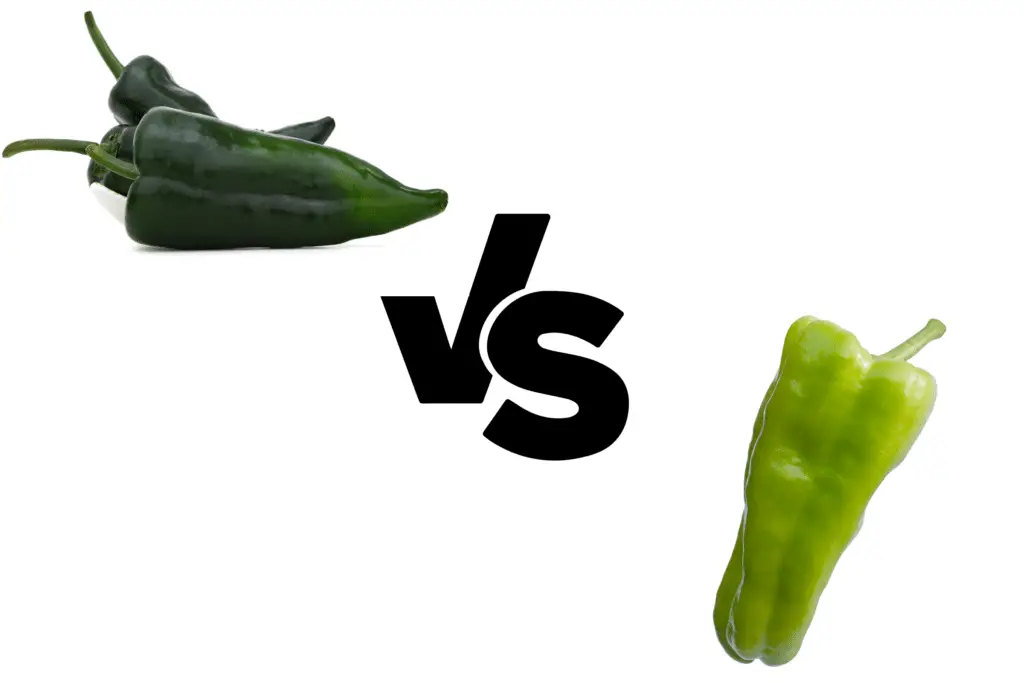
Let’s look at the similarities and differences between poblano and cubanelle peppers based on the following criteria:
- Poblano peppers vs cubanelle peppers heat level
- Poblano peppers vs cubanelle peppers flavor
- Poblano peppers vs cubanelle peppers texture
- Poblano peppers vs cubanelle peppers size and shape
- Poblano peppers vs cubanelle peppers nutrition
- Poblano peppers vs cubanelle peppers cost and availability
- Unique difficulties
- Substitutions
| Criteria | Poblano Pepper | Cubanelle Pepper |
|---|---|---|
| Heat level | 1,000-2,000 SHU | 500-1,000 SHU |
| Flavor | Deep, dark, smoky | Sweet with a hint of spice |
| Texture | Smooth | Smooth |
| Size | Up to 6″ | Up to 6″ |
| Shape | Relatively flat | Rectangular (similar to bell peppers) |
| Nutrition (per 100g) | 20 Calories 134% DV Vitamin C | 20 Calories 133% DV Vitamin C |
| Substitutions | Green bell pepper | Green bell pepper or pimento pepper |
Poblano peppers vs cubanelle peppers heat level (in Scoville heat units)
Poblano peppers range from 1,000-2,000 SHU.
Cubanelle peppers range from 500-1,000 SHU.
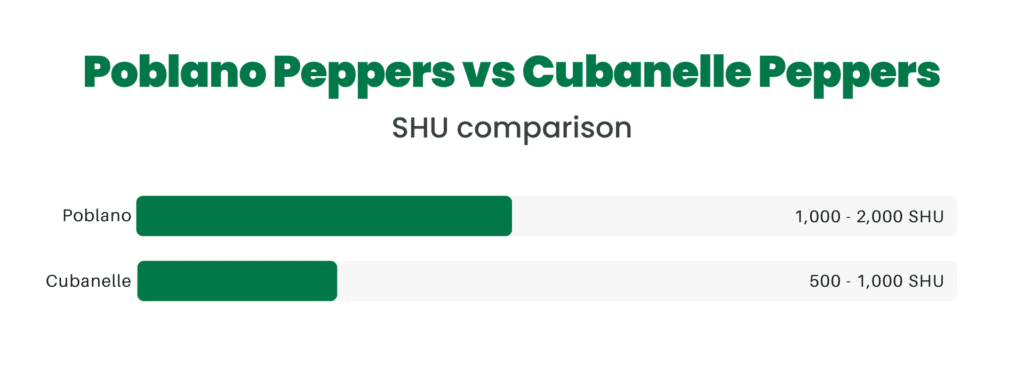
This means you can end up with a poblano and a cubanelle that are equally spicy, a spicier poblano, or a cubanelle with practically no heat!
Poblano peppers vs cubanelle peppers flavor
Poblano peppers have a deep, rich, smokey flavor with a little kick.
On the other hand, cubanelles are sweet like bell peppers with just a touch of spice.
Poblano peppers vs cubanelle peppers texture
Cubanelle and poblano peppers are equally smooth.
Poblano peppers have a very thick outer skin that is typically removed before eating. Typically poblanos are sold in their dark green stage, although ripe poblanos are deep red.
Cubanelle peppers are a bright green and have the soft outer skin more reminiscent of a bell pepper.
Poblano peppers vs cubanelle peppers size and shape
Poblano peppers and cubanelle peppers are both in the same ballpark for size, roughly 6 inches.
Poblanos look a lot like flattened bell peppers, whereas cubanelles also resemble bell peppers but are more rectangular.
Poblano peppers vs cubanelle peppers nutrition
Poblano peppers and cubanelle peppers are both low in calories and high in vitamin C content, with a mild amount of capsaicin.
This means both peppers help fight free radicals and potentially have anti-inflammatory properties.
Cost and availability
Poblano peppers cost less than cubanelle peppers because they’re easier to find.
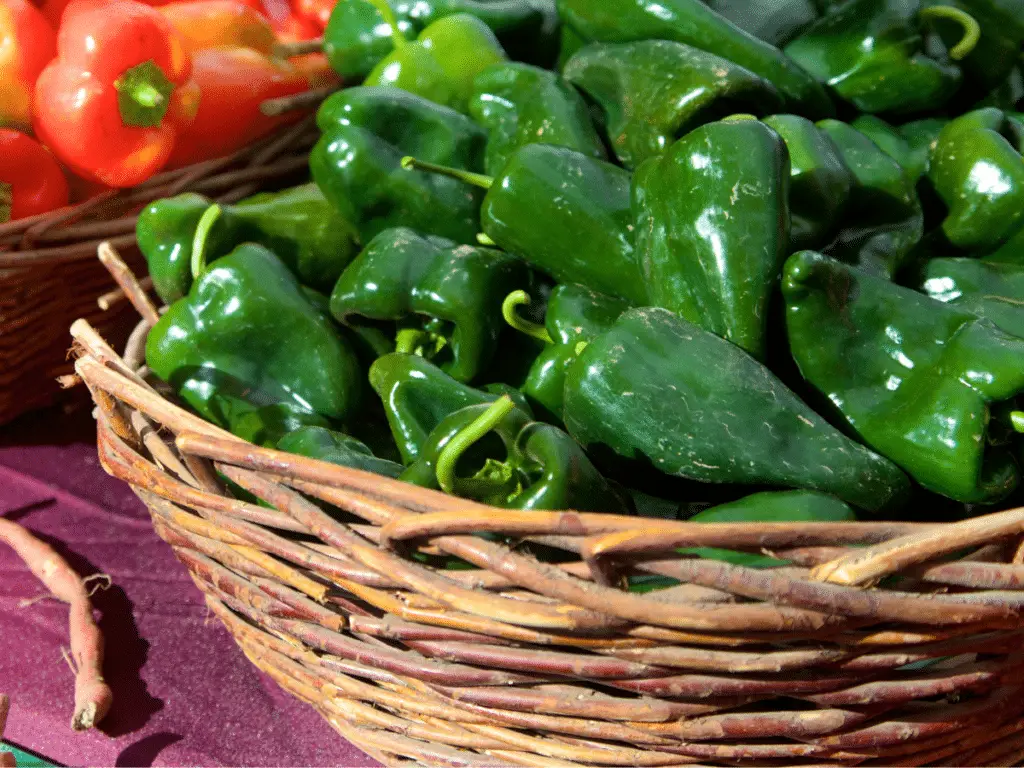
While recipes that call for cubanelle peppers are easy to find, they’re not nearly as common as poblanos. If you’re looking for cubanelles, you might want to consider adding them to your garden!
Unique difficulties
Some people dislike the tough skin on poblano peppers and prefer to remove it.
Truthfully, there aren’t many difficulties using cubanelle peppers! The biggest issue is likely to be finding them, although they may be hard to stuff given their softer skin.
Can you substitute poblano peppers for cubanelle peppers or vice versa?
Poblano peppers and cubanelle peppers would be a tough substitute.
While they have comparable heat levels, their flavor profiles are completely different. Poblanos have a deep earthy flavor, while cubanelles are lighter and quite sweet.
Poblano Peppers – a complete overview
Poblanos are a beloved bell pepper alternative that deserve more credit than they receive!
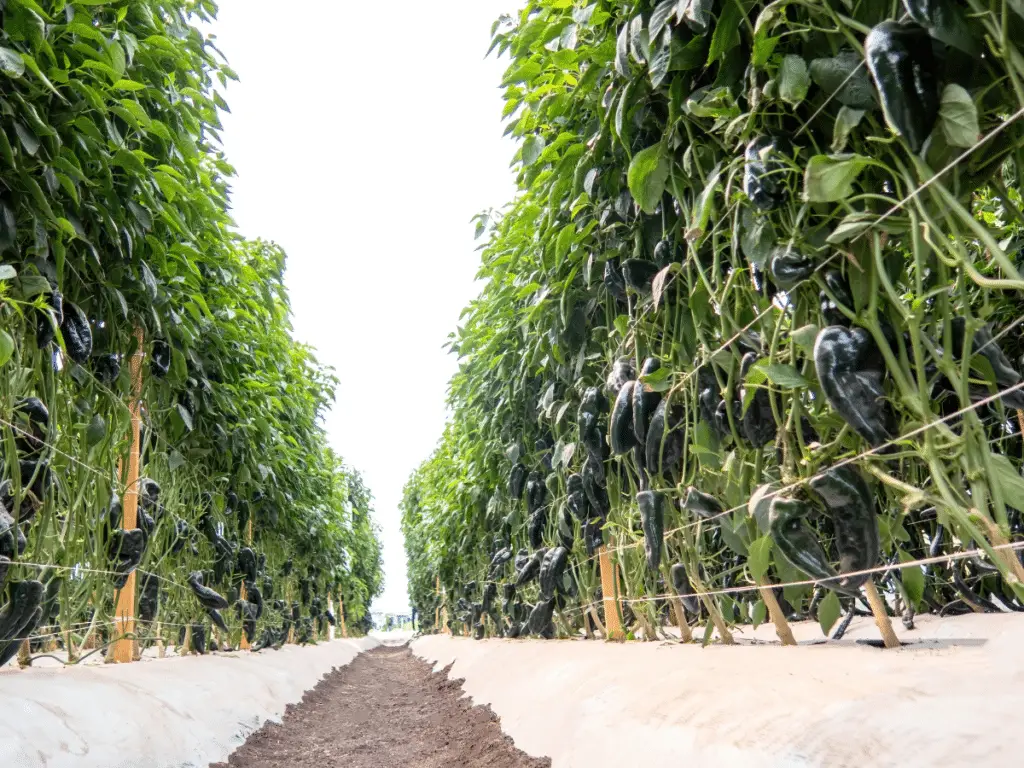
Poblano peppers are very popular in Mexican cuisine and have a deep, earthly flavor and an approachable heat. Although the tough outer skin makes them unpleasant to eat raw, it also ensures the structure and stability required for a great stuffed pepper.
Let’s take a look at this much-loved pepper!
Heat
Poblano peppers have a mild heat, coming in at 1,000-2,000 SHU.
As poblano peppers mature, their capsaicin levels increase.

A dark green pepper is likely about 1,000 SHU. A red, mature poblano will be closer to 2,000. So choose wisely!
Flavor
Poblano peppers have a deep, rich, earthy, umami flavor.
Size, shape, and texture
Poblanos are 4-6 inches long depending on maturity and growing conditions.
They look a lot like more deeply colored bell peppers, except flatter.
Poblanos have a tough outer skin that many people dislike.
Nutritional content and potential health benefits
One cup of poblano peppers (raw) has:
- 30 calories
- 30% DV Vitamin B6
- 134% DV Vitamin C
- 14% DV dietary fiber
Some potential health benefits of poblano peppers are:
- High antioxidant content
- Fighting inflammation
- Helping ease pain
- Immune-boosting
Cooking with poblano peppers
Stuffing poblanos is arguably one of the best ways to enjoy them! Popular stuffings include cheese, beans, and rice.
Blistering poblanos is another great option. The charring action helps to bring out the pepper’s deeper flavors.
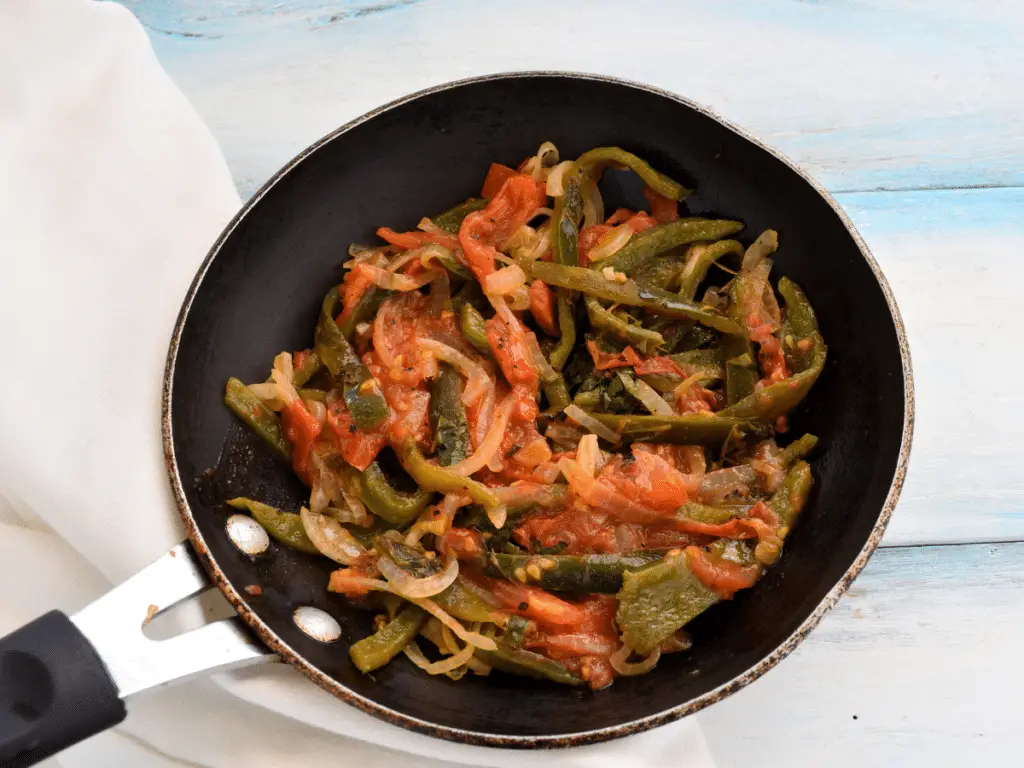
Of course, you can also roast, saute, or grill your poblanos. If the thick skin doesn’t bother you, they’re also delicious on salads or to dip in hummus!
Substitutions for poblano peppers
The best substitution for poblano peppers is bell peppers.
Bell peppers are sweeter and lack heat, but they’ll do the trick in most recipes.
Freezing, drying, and preserving poblano peppers
Lucky for you, we have extensive guides on how to freeze, dry, and pickle your poblanos!
Cubanelle peppers – a complete overview
Cubanelles are underrated peppers that deserve their time to shine.
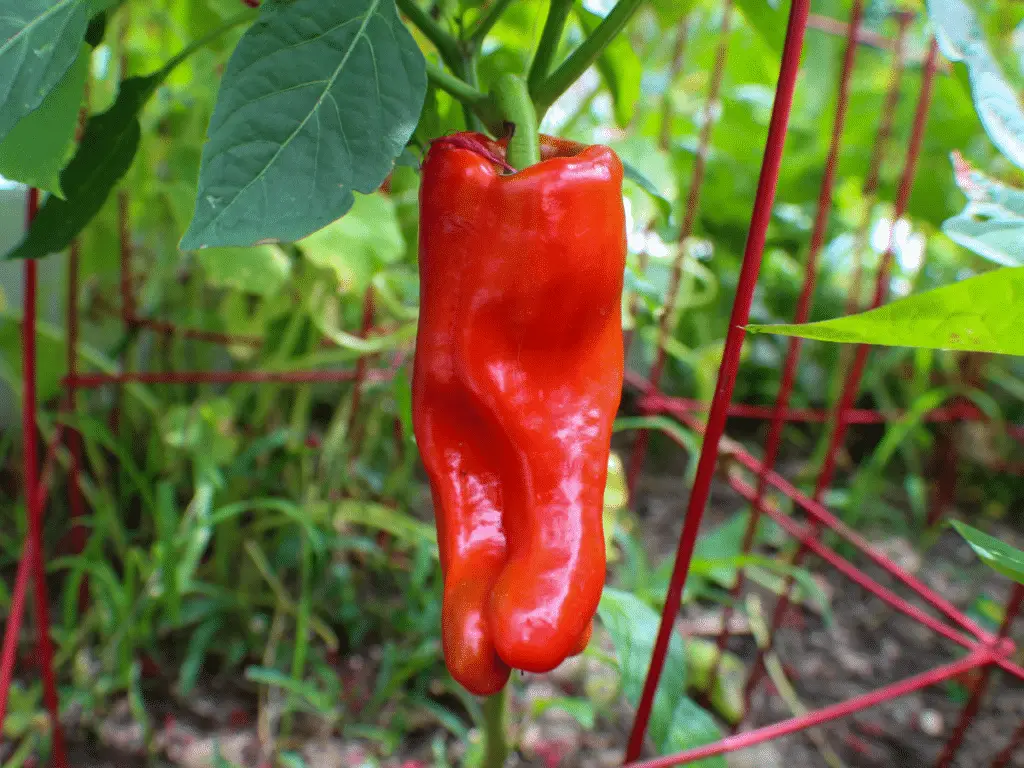
Let’s shed some light!
Heat
Cubanelle peppers have an SHU rating ranging from 500 and 1,000. This puts them at the very mild end of spicy peppers.
Flavor
Cubanelle peppers are actually a variety of sweet pepper, despite their slight heat.
Size, shape, and texture
Cubanelle peppers are about 6 inches long.
They have lobes just like bell peppers but are longer and more compact.
Nutritional content and potential health benefits
Per pepper, cubanelles have:
- 20 calories
- 170% DV Vitamin c
Some potential health benefits of cubanelle peppers include:
- Fighting free radicals
- Good for weight loss
- Anti-inflammatory
Cooking with cubanelle peppers
Generally speaking, people cook with cubanelle peppers the same way they would cook with bell peppers.
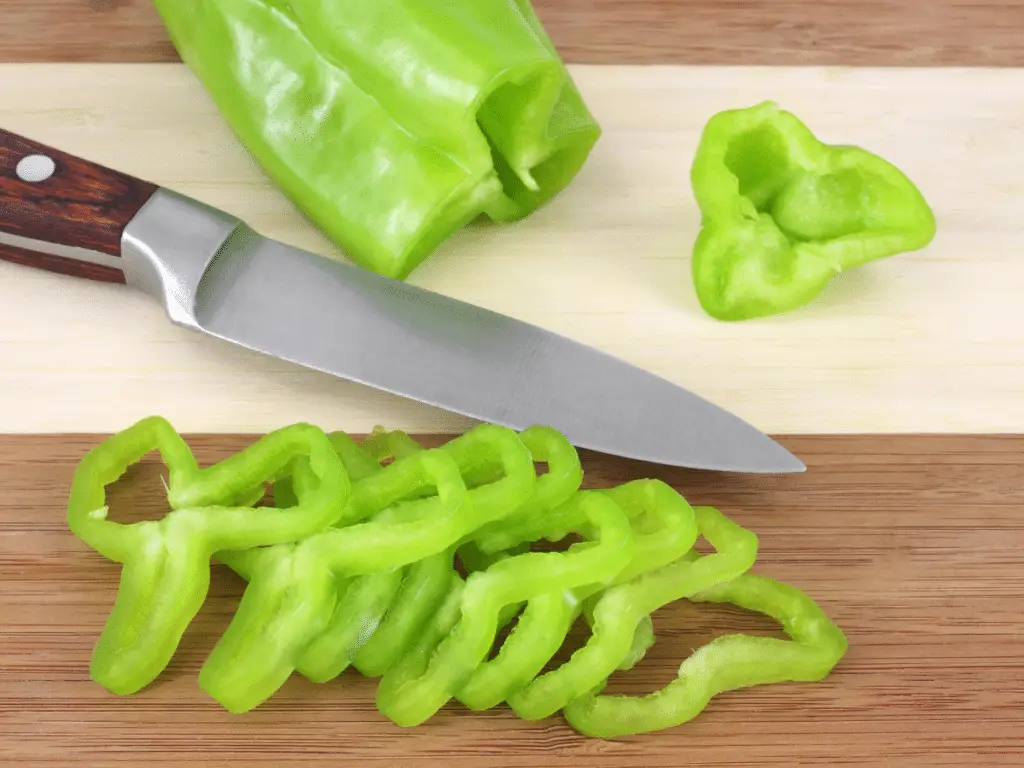
This includes stuffing, sauteing, roasting, grilling, or raw in salads and to dip with hummus.
Substitutions for cubanelle peppers
Bell peppers are the best substitute for cubanelle peppers because they share the same sweet flavor.
Freezing, drying, and preserving cubanelle peppers
You can freeze, dry, pickle, or can cubanelle peppers to preserve them.

